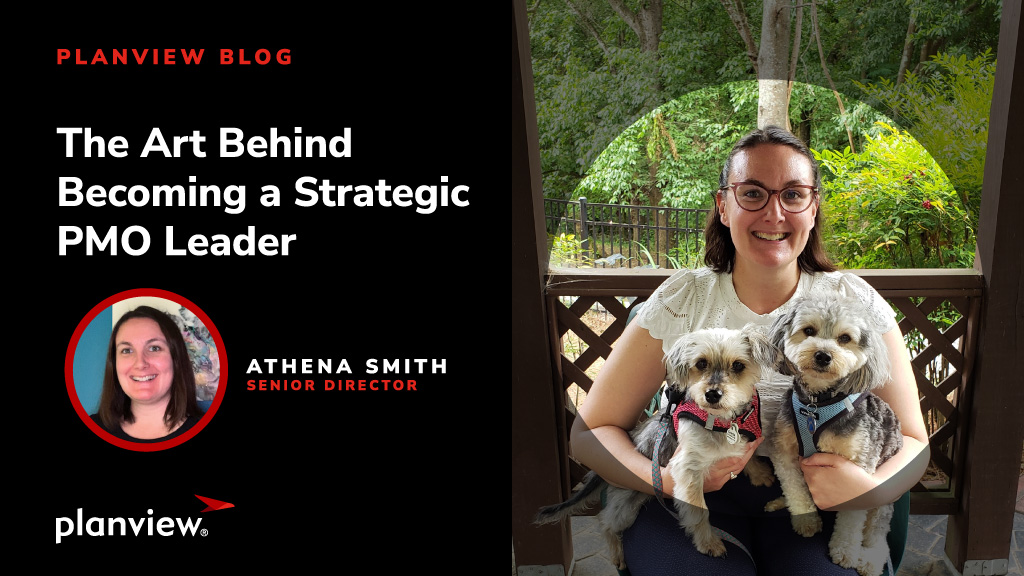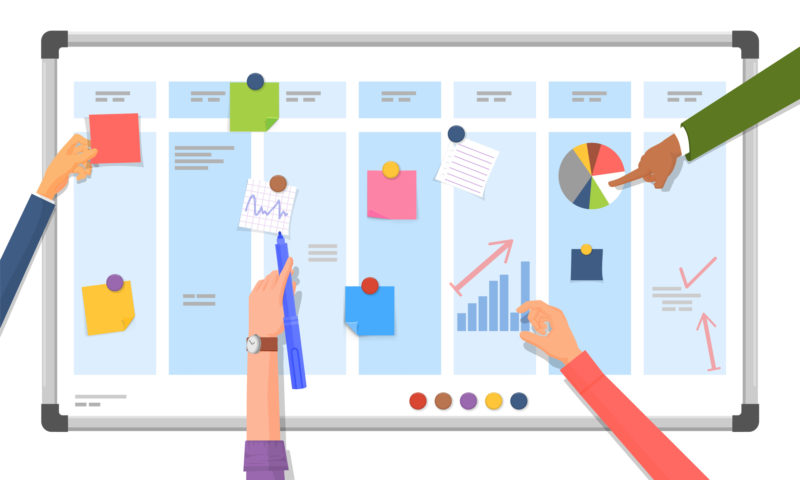
Unlock the strategies to overcome key PMO hurdles—mastering resource management, driving change, and streamlining processes—with expert insight from Athena Smith, Senior Director, Portfolio Management.
In this post, you’ll learn:
- Why Putting People at the Heart of Change Matters
- The Exciting Future Ahead for the PMO
- How AI Can Help Prioritize Impactful Work
Meet Athena Smith
Athena Smith hails from Georgia and is based in Atlanta. Pursuing her passion for mission-based work, Athena has spent her career in museums, higher education, and the ASPCA. Throughout her career, she has developed expertise in project portfolio management, process improvement, change leadership, and stakeholder management. Athena currently leads the delivery of organizational priorities through portfolio management frameworks and best practices.
But portfolio management wasn’t always her field. Initially, she studied history at Georgia State University and then pursued a master’s degree in museum studies and anthropology at George Washington University. After several years working in museum management, Athena decided to specialize in project management, which gradually led her to her current role.
Athena finds joy in hiking and balances her life as a dedicated dog mom and foster dog mom with a passion for fiber arts. With over 15 years of knitting experience, she also dyes yarn sustainably and is a novice weaver. Her enduring love for art reflects the lasting impact of her museum background.
How did your transition from roles in museum history to portfolio management unfold? What sparked that change?
Working in museums was a fantastic way to develop project management skills, even though I wasn’t using PMI terminology then. I managed everything from small projects to large-scale traveling exhibitions and capital projects, including opening a new museum with new collections storage and library.
I eventually left the museum field after discovering that project management was my favorite part of the job. Transitioning to traditional project management was a steep learning curve, especially in stakeholder management and resource influencing, prompting me to pursue PMP certification and roles with formal practices.
I often say my career path to project management isn’t traditional, but it’s been instrumental in honing my communication and analytical skills.
PMO Strategies
Does your PMO have a traditional project focus, a more product-oriented approach, or a blend?
We focus on traditional projects but simplify them as much as possible, releasing pilots and tools under the motto “do, learn, share.” Our approach is designed to be accessible. Many in our organization don’t have exposure to traditional project management terminology and tools, so we aim to empower everyone with essential components rather than the full PMO toolbox. We believe everyone can be a successful project manager!
Read Next: Elevate Your PMO: How Looking to the Future Drives Value Today
Resource management is crucial in portfolio management. What methodology do you subscribe to for effective resource management?
Resource management is a common challenge in the industry, and there’s no one-size-fits-all solution. This year, we adopted quarterly planning to manage resources more effectively. While annual plans offer a vision, we need to remain nimble to shift resources to the most impactful work.
Quarterly planning helps our teams focus on immediate milestones and resource needs.
We review projects each quarter to determine if they remain a priority and if they’re delivering the expected ROI. To make resource management more approachable, we categorize resource needs into one to two hours per week, three to seven hours per week, and eight or more hours per week.
We work with team members to identify the required resources and translate them into FTE percentages for monthly forecasting. Our report flags over 50% allocation, allowing us to manage capacity through project staggering, resource switching, and work pausing.
As a project management leader passionate about process improvement, how have you applied Lean or Agile methodologies to enhance efficiency and reduce waste?
I establish feedback loops with project managers to understand what works, what doesn’t, and what adds value versus extra clicks. I have open conversations to ensure the framework fits the organization and integrate feedback through sprints into our daily work.
We recently discovered that tools like RAPID, with roles like recommender and decider, speed up decisions and remove bottlenecks. We aim to simplify project management best practices by minimizing steps, driving value, and applying Lean principles for efficiency and ease of use.
Solving PMO Challenges
How do you navigate the change management challenge?
I start with a clear North Star and communicate this clearly. Then, I dive into the change management plan with three main components:
- Educate: People need to know and understand the change.
- Engage: Create a feedback loop and involve people in the change.
- Inspire: Motivate and inspire people to complete the work.
Then, I identify all stakeholders, flagging who is an assister, a resistor, and a neutral. I analyze how the change impacts each group and find opportunities for them, focusing on what’s in it for them (WIIFT).
For resistors, I assess how they can impact the project — stopping it entirely or needing to be informed. It is crucial to understand the root of their resistance, which can often be emotional or tied to loss. Then, we brainstorm ways to address it.
For sustainable change, prioritize people by celebrating wins, showing appreciation, and using storytelling.
Equip managers with tools to support their teams, as research shows effective change often hinges on leadership support. When leaders back the change, managers follow, but the impacted staff may need more time to adapt.
Read Next: Navigating 3 Common Challenges of PPM Transformation
What are some unique challenges that nonprofits face in portfolio management?
One challenge I’ve noticed is the difference in measuring success. While many focus on OKRs and finances, our work is driven by impact, which can be difficult to quantify and may not be fully measurable for years.
Our priorities and perspectives differ, leading to varied progress measurements. Ultimately, it’s still project management. Whether solving customer pain points or improving business outcomes, we aim to make a meaningful impact in our field.
Nonprofit project management is more flexible, needing greater team buy-in and adaptability than corporations with established PMOs. When working in the non-profit field, many colleagues are unfamiliar with PMOs and project management terminology, so we adjust our processes and templates to make them more accessible to all stakeholders. Using project management tools while adapting terminology and practices to fit our context is crucial.
The Future of the PMO
What do you see as the biggest opportunities for PMOs in the next five to 10 years?
The opportunities for PMOs are significant, making this an exciting field. As the business environment becomes more dynamic with many new players, PMOs will be crucial in helping organizations adapt and achieve their strategic goals.
PMOs are evolving into key delivery arms that align strategy with execution.
My vision is for PMOs to promote strategic agility and consistent value delivery by becoming true partners that empower teams to achieve results.
I see a shift from traditional to strategic portfolio management, aligning work with organizational goals. With organizations often having more ideas than resources, advancing AI and automation can help prioritize impactful projects. Despite tech advances, people and strong relationships remain central to adaptable project management.
What’s your opinion on integrating AI into the PMO? Where do you see opportunity? Where do you see risk?
I’m excited about AI’s potential to uncover opportunities and risks we might miss as humans and portfolio managers. It can also streamline our project portfolio, helping us make informed decisions and maximize impact by analyzing and optimizing our projects for the best results.
When considering risk, data security and validation are key. It’s important to ensure that data is properly validated and that individuals have the right permissions and security levels to access it. Building confidence in the data’s integrity and security is crucial for fully leveraging AI’s potential.
Read Next: How AI is Improving Early Warning Systems in Project Management
Inspiration for PMO Leaders
Are there any leaders you admire or good reads you’d recommend?
I was impressed by Cassandra Worthy at the 2023 PMI conference. Her approach to building change resiliency through growth opportunities in change is insightful. Her book, Change Enthusiasm, and brief videos offer practical advice on overcoming resistance.
Kim Scott’s Radical Candor helped me balance kindness, communication directness, and stakeholder management. Stacey Abrams’s Lead from the Outside provided inspirational exercises and reflections that guided my career from project management to program and portfolio management. Lastly, Stephen Covey’s Trust & Inspire has influenced my leadership approach and fostered team trust.
Final Takeaways
Athena Smith’s journey from museum exhibits to nonprofit impact highlights how diverse experiences shape effective project management. Her insights emphasize the importance of mastering adaptable resource management and eyeing future strategic partnerships with PMOs.
To further enhance your PMO’s impact and continue building on these insights, be sure to explore our Savvy PMO series:
- The Savvy PMO’s Guide to Prioritization
- Evolve into a Multi-Faceted Strategic Partner
- Prioritization Checklist for the Savvy PMO
- The Savvy PMO’s Guide to Resource Planning
- The Savvy PMO’s Guide to Demand Management
Each guide has insights to help you drive your PMO’s success.







